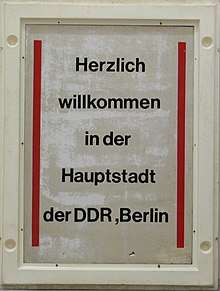Klempen
Klempen is a German typographical term for the omission of a space after a word or punctuation mark (e.g. comma, full stop, exclamation mark, question mark, dash).

Its counterpart (and derivation) is Plenken, the incorrect addition of a space before punctuation marks.
Etymology
Klempen is a constructed word from the German plenken (meaning "to add inappropriate spaces", itself a borrowing from the English blank) and klemmen ("to wedge", possibly a reference to Linotype machine operators' slang term wedges for the spacebands used to implement justified spacing), exchanging the k and p in such a way as to suggest both phonetically and orthographically its relationship and opposite meaning.
Both are internet coinages, dating from Johannes "Jödel" Leckebusch's introduction of plenken on MausNet in 1988 and now widely used on German newsgroups.
Examples
- I am klemping, this makes the text less readable. But well, this is only an example.
- I'm fine, thanks. How are you?Are you still ill?
- Mir geht es gut.Harald, ja doch!Richtig,glaub mir.
- Hier steht ein Punkt.Und gleich noch einer.
- Chinesen dürfen klempen!Wir in Europa leider nicht.
Special case: Chinese and Japanese
In Chinese and Japanese printing, spaces are omitted after the respective punctuation marks, possibly because CJK characters are fixed-width. Klempen is thus more common among Chinese and Japanese typists writing in languages with a Latin alphabet.
See also
- French spacing#French and English spacing